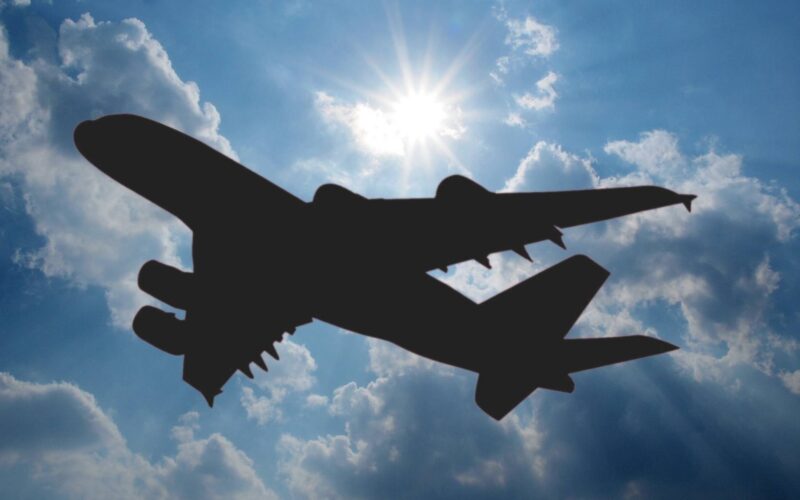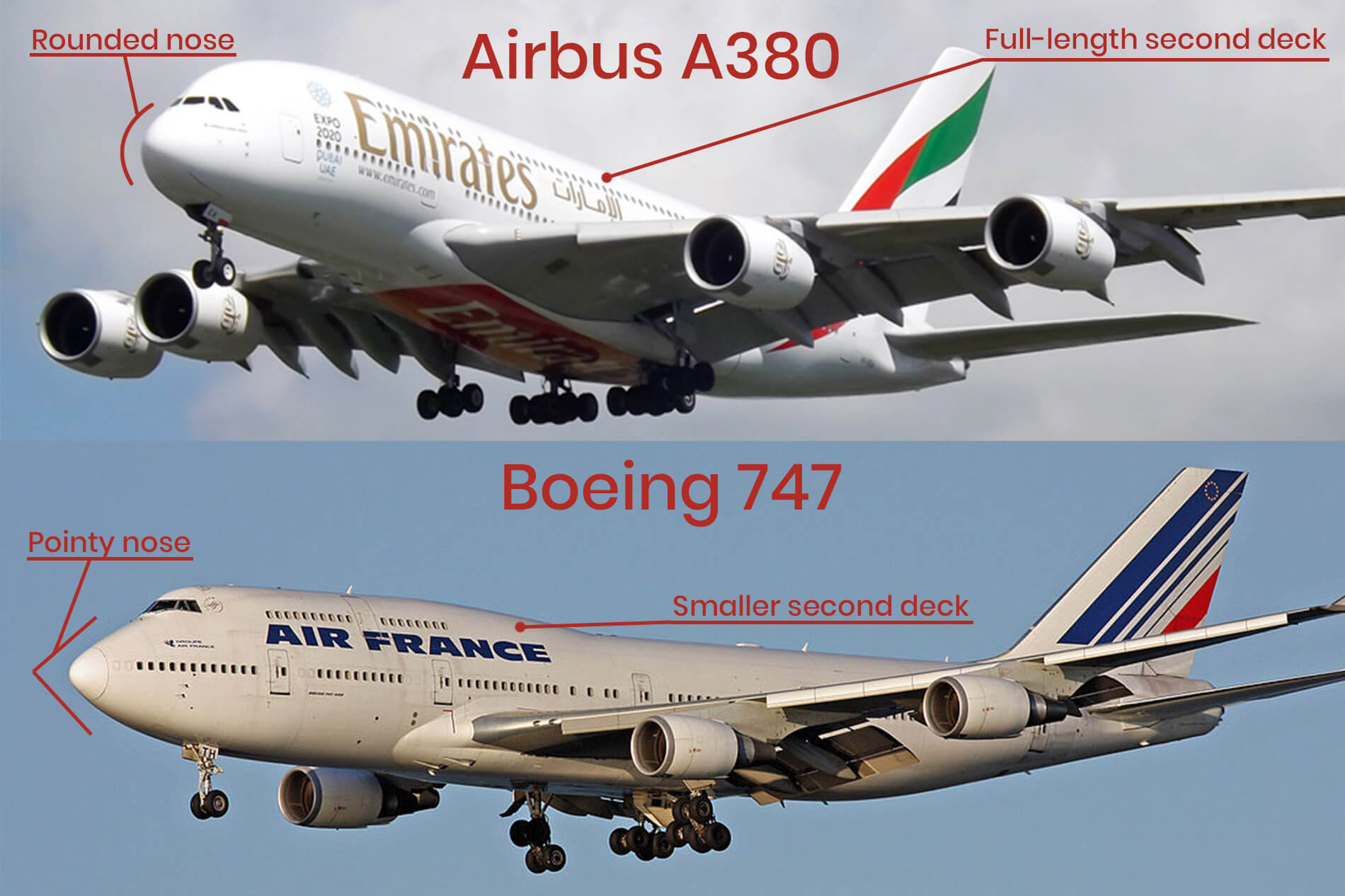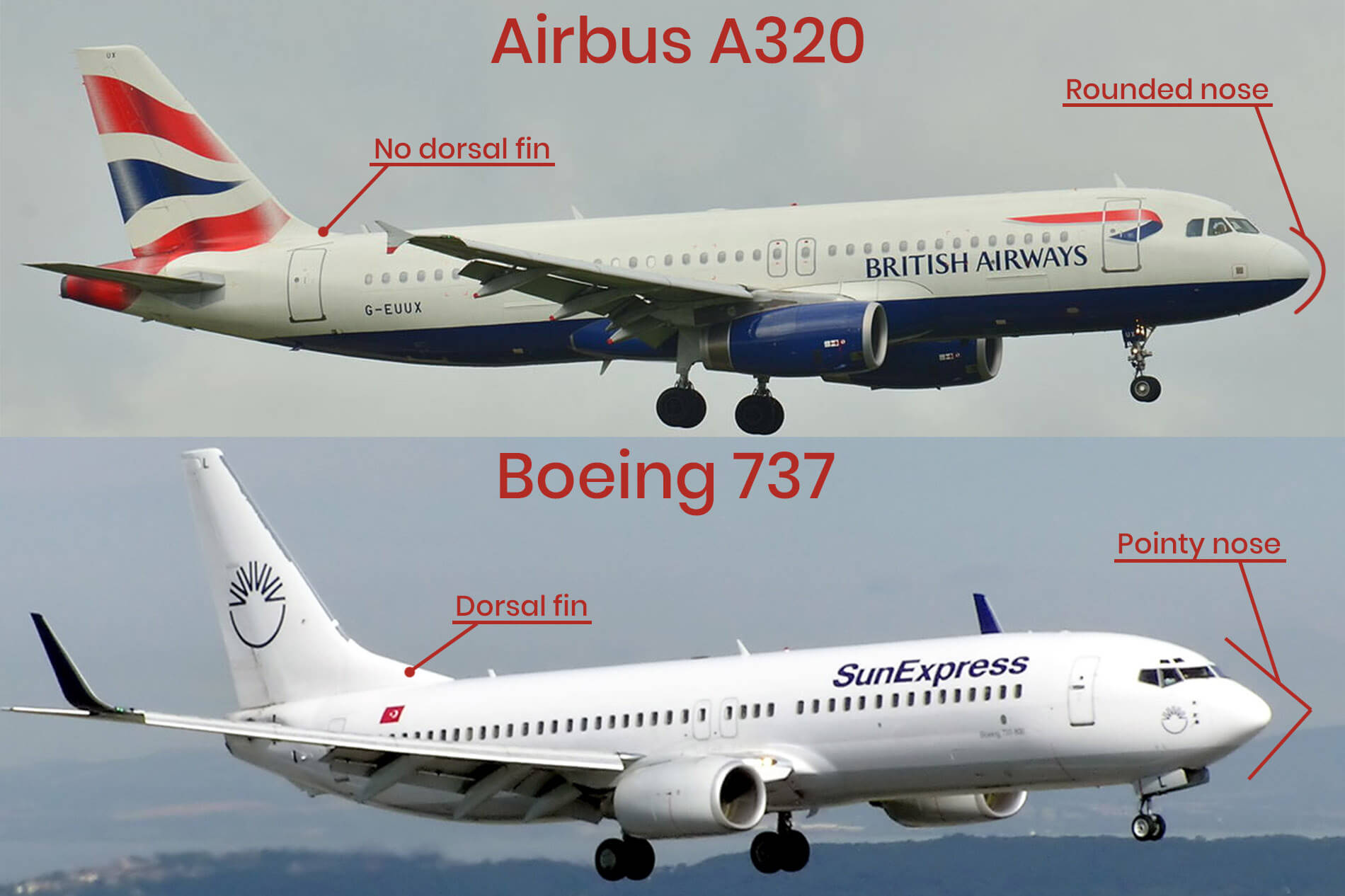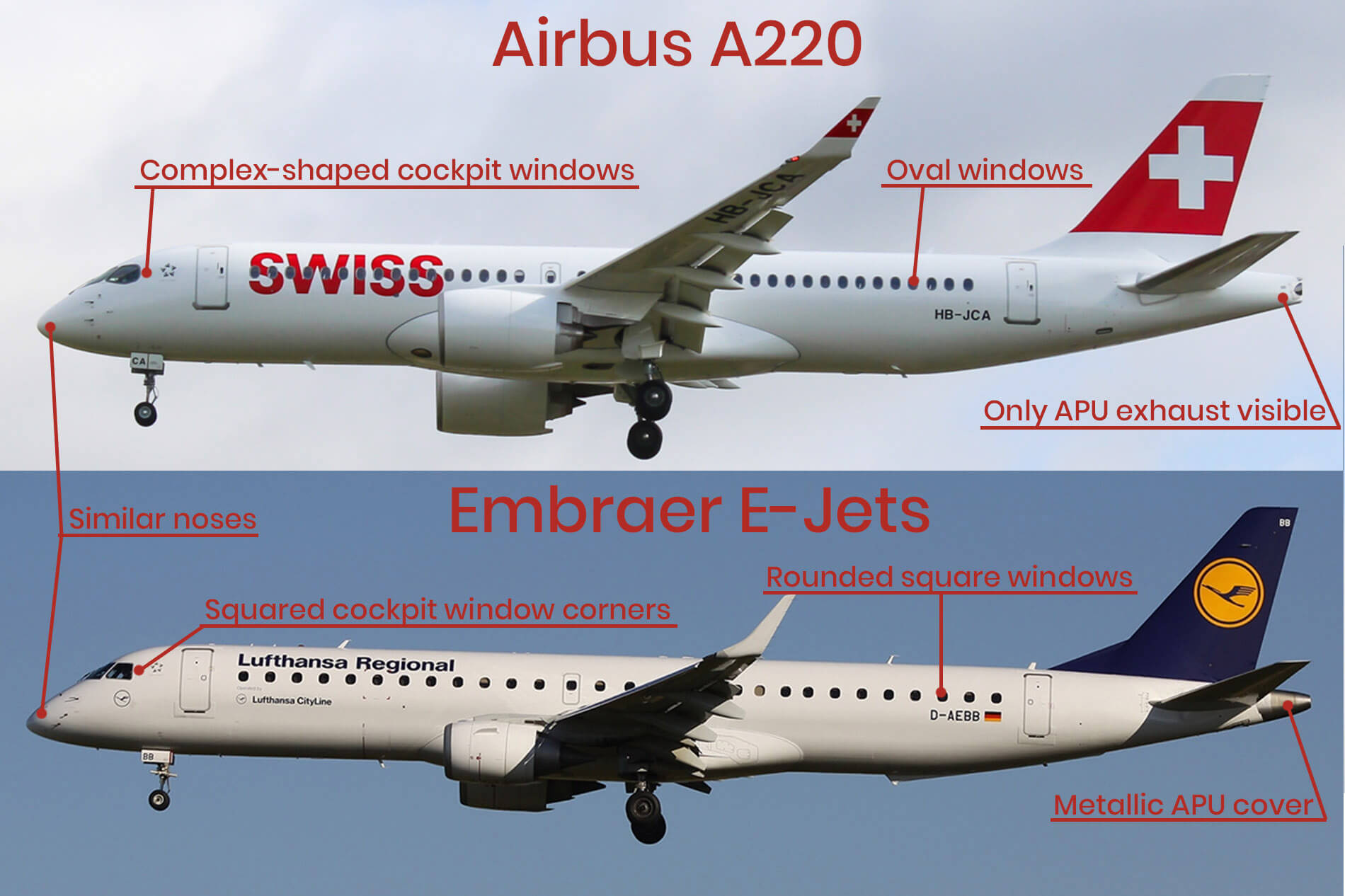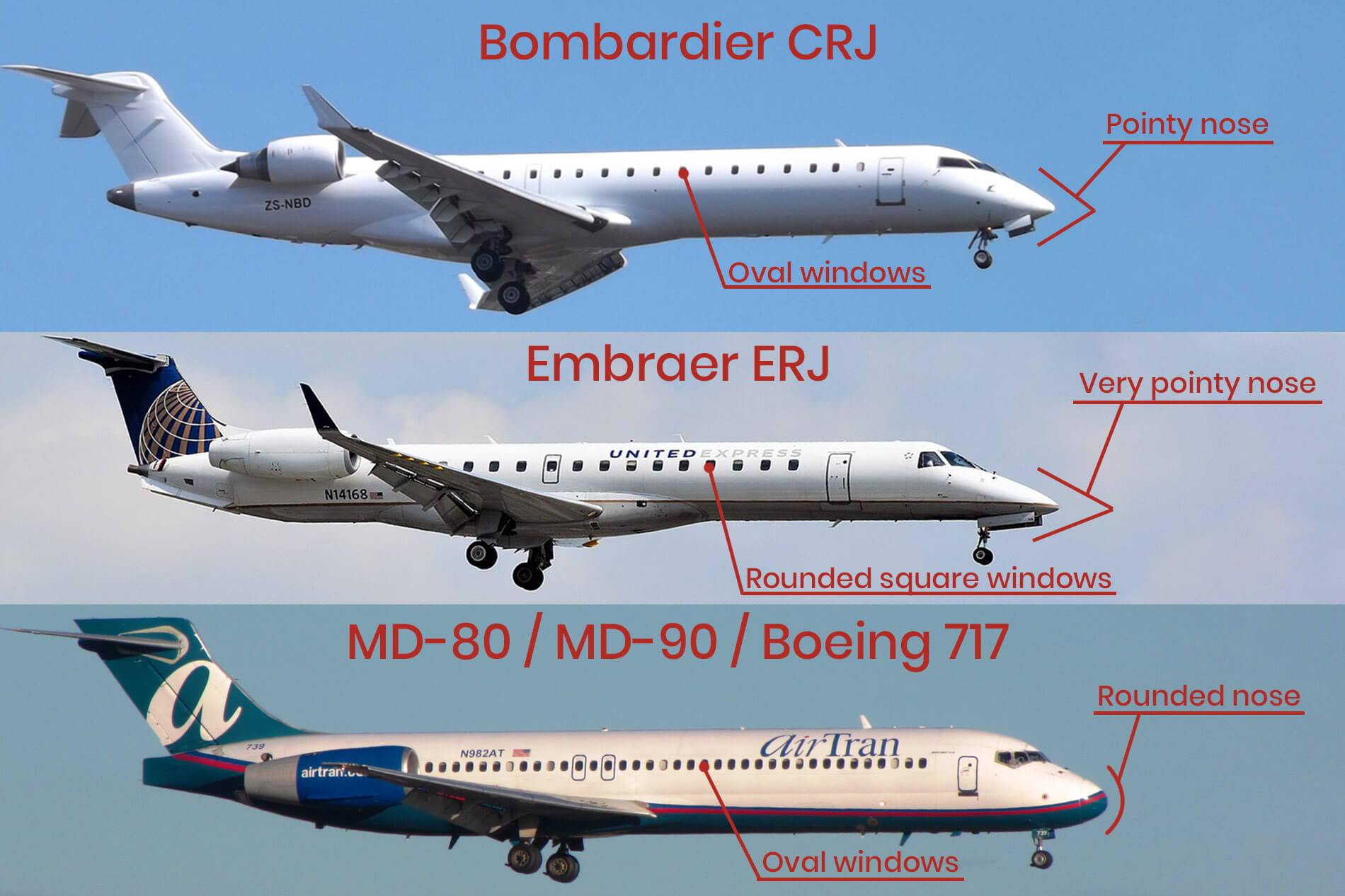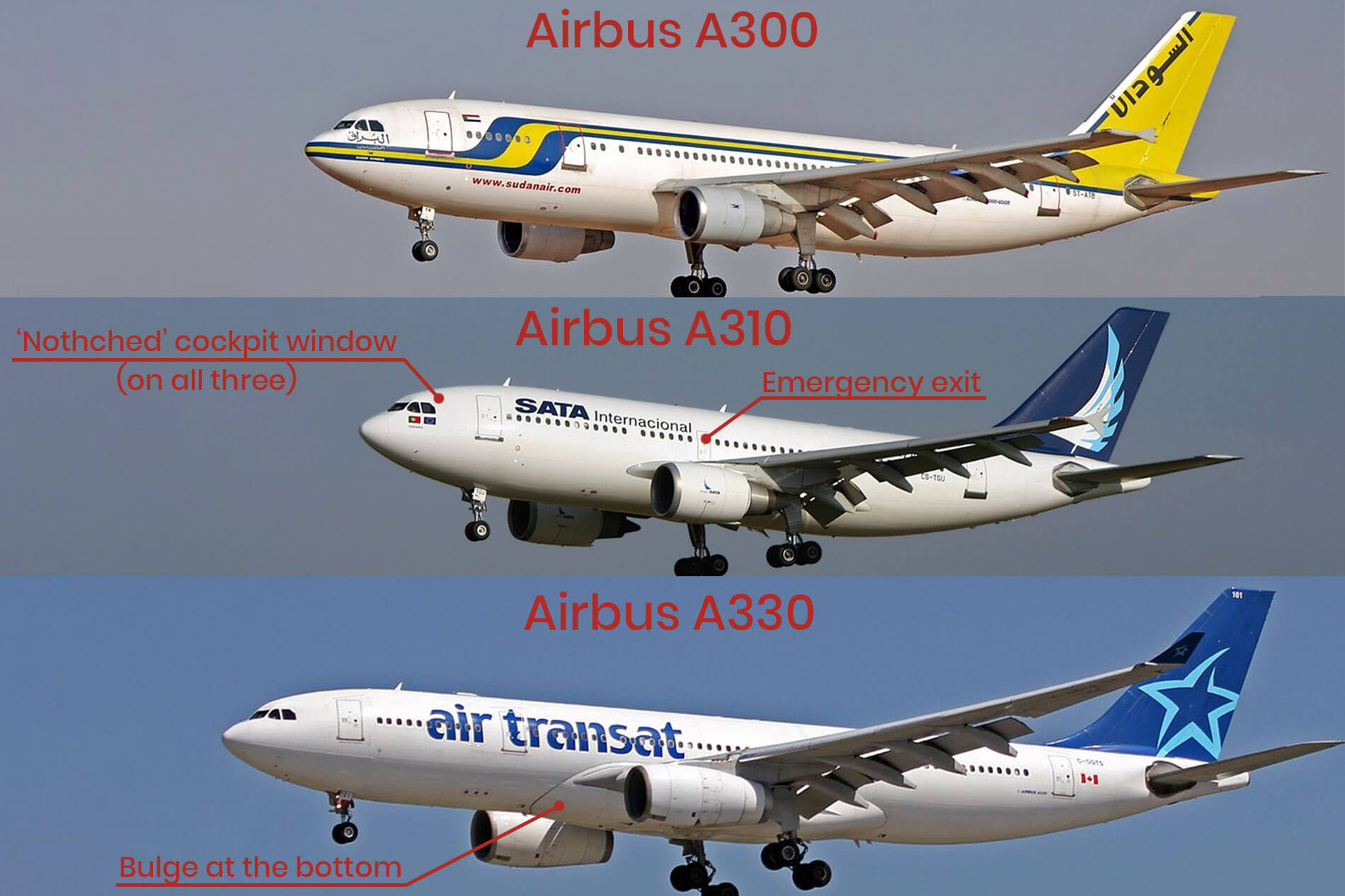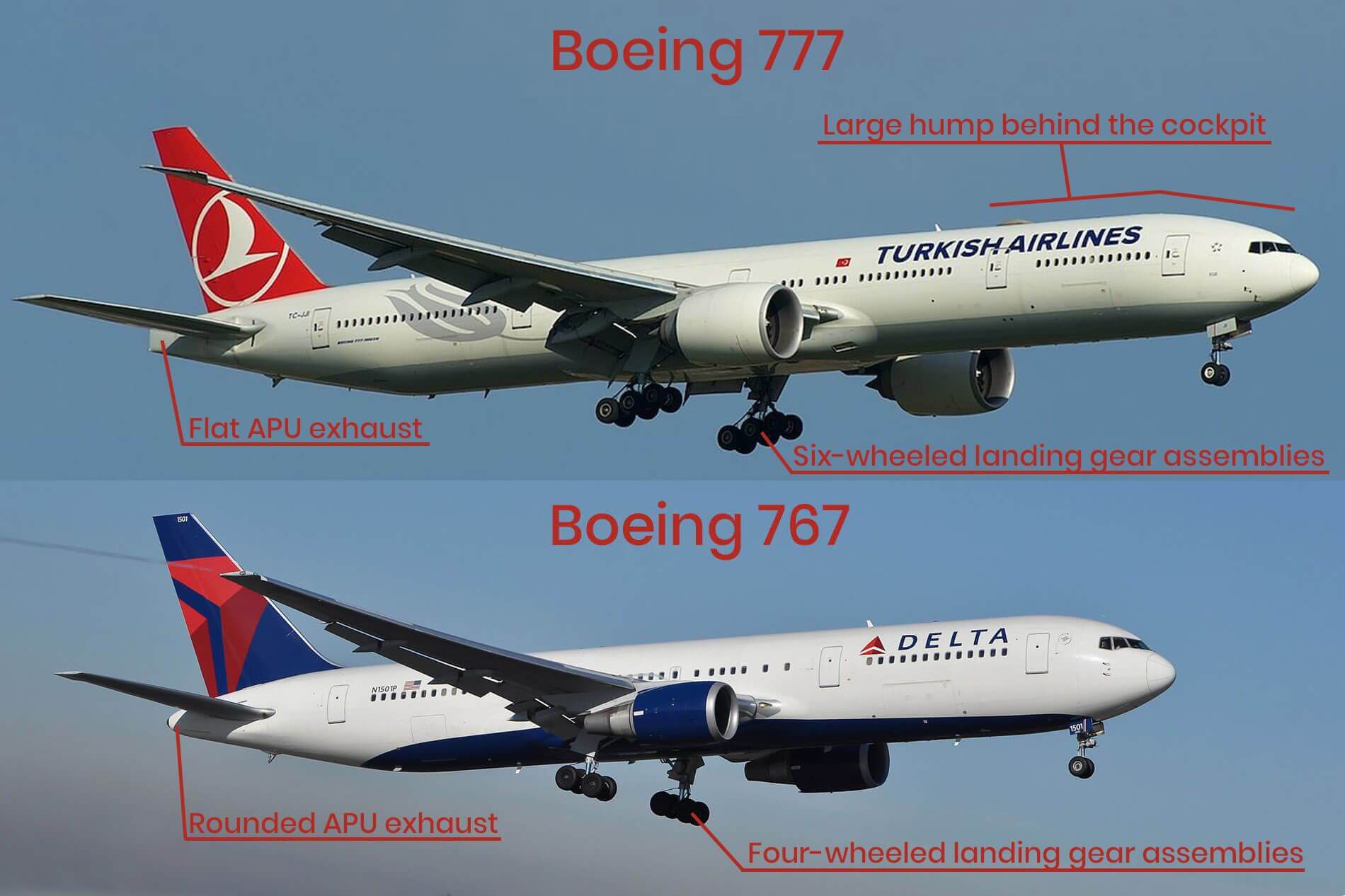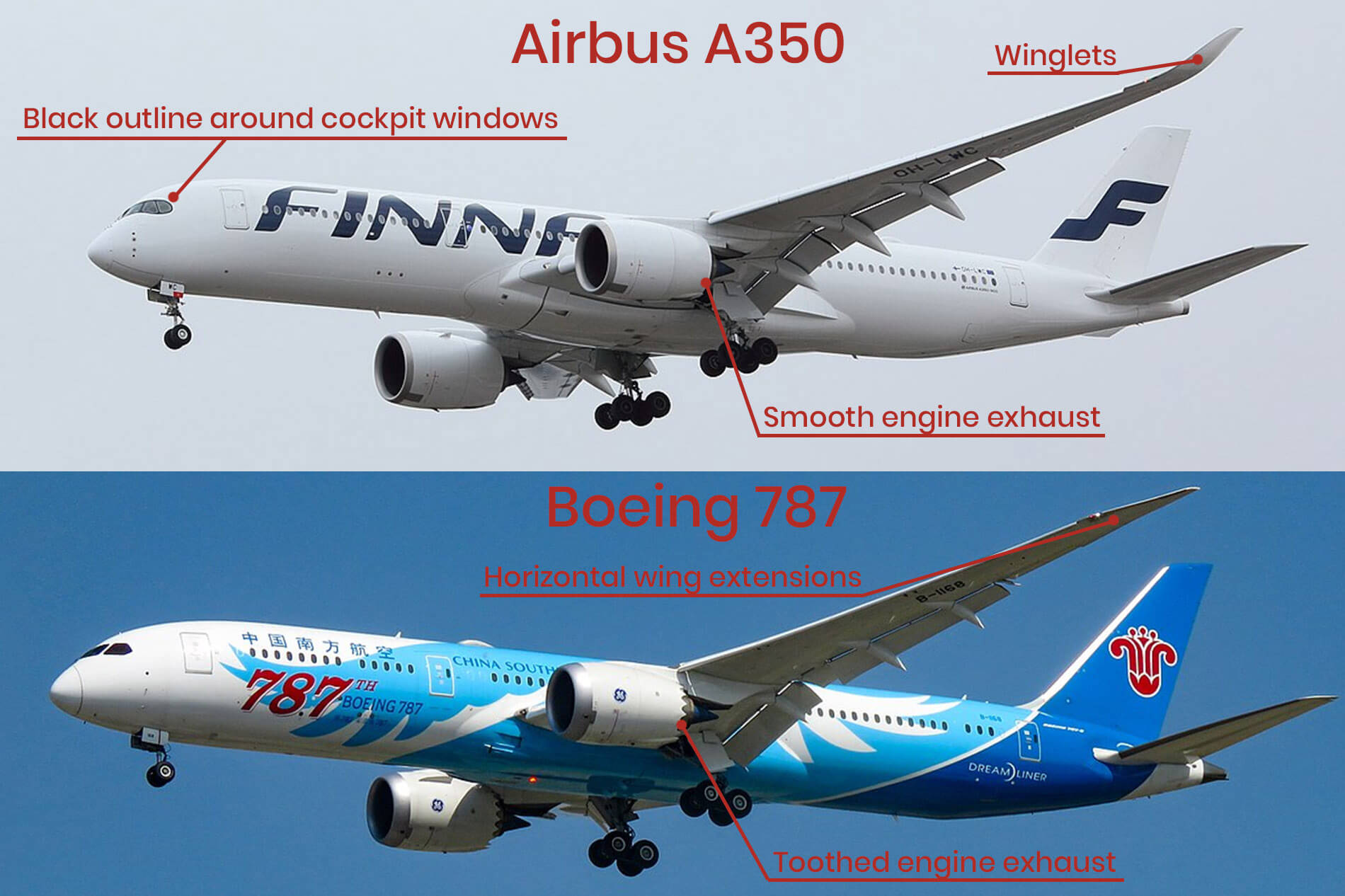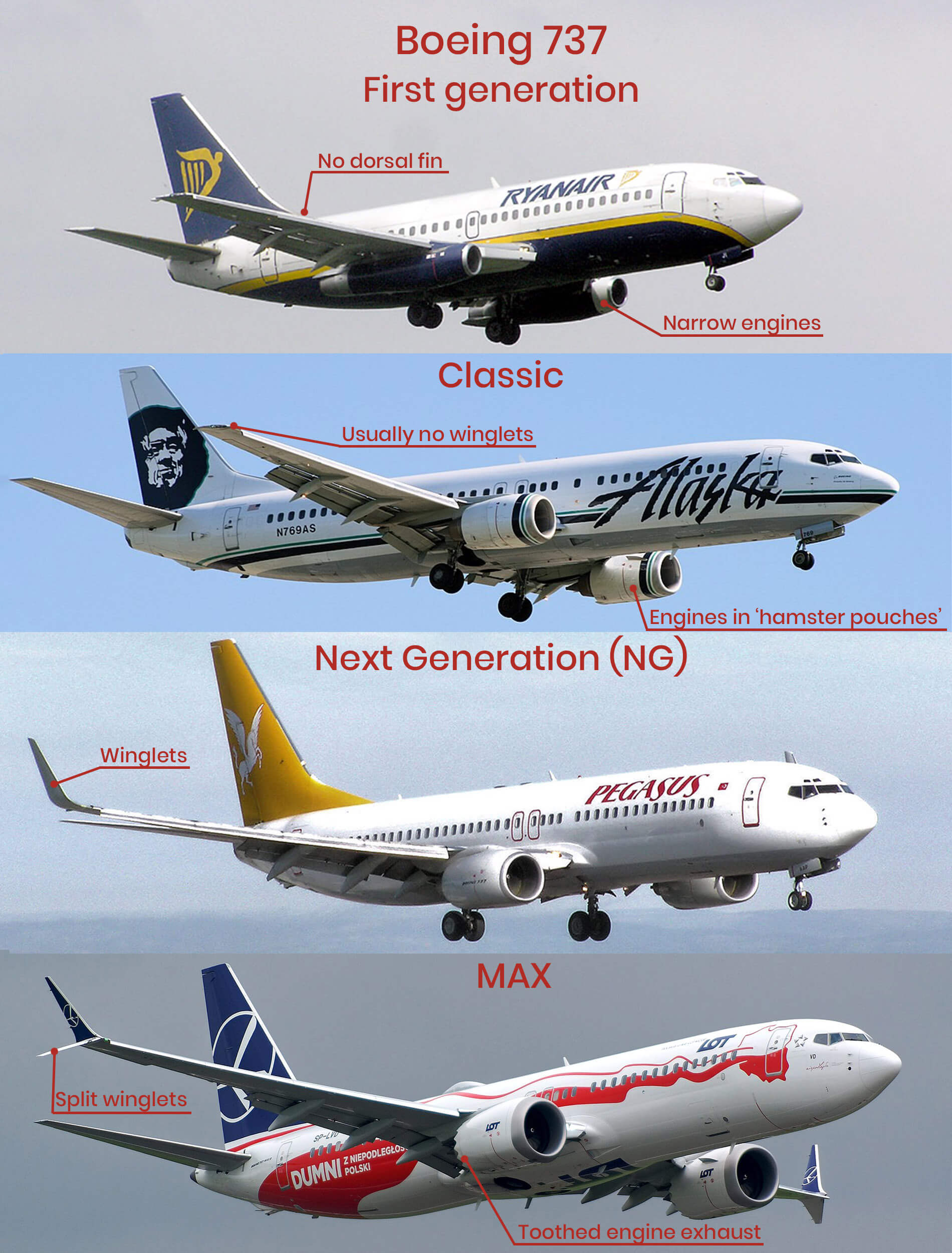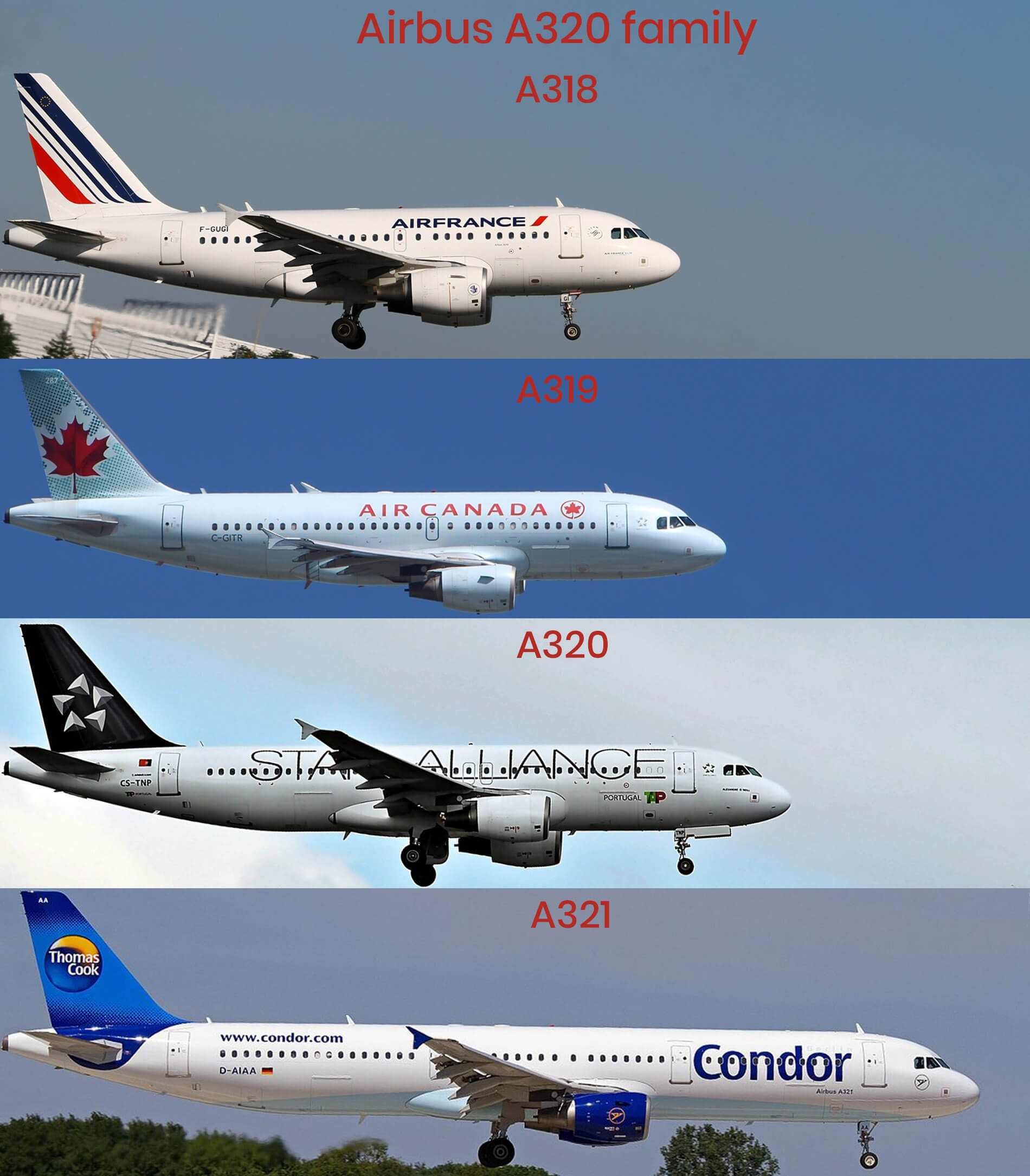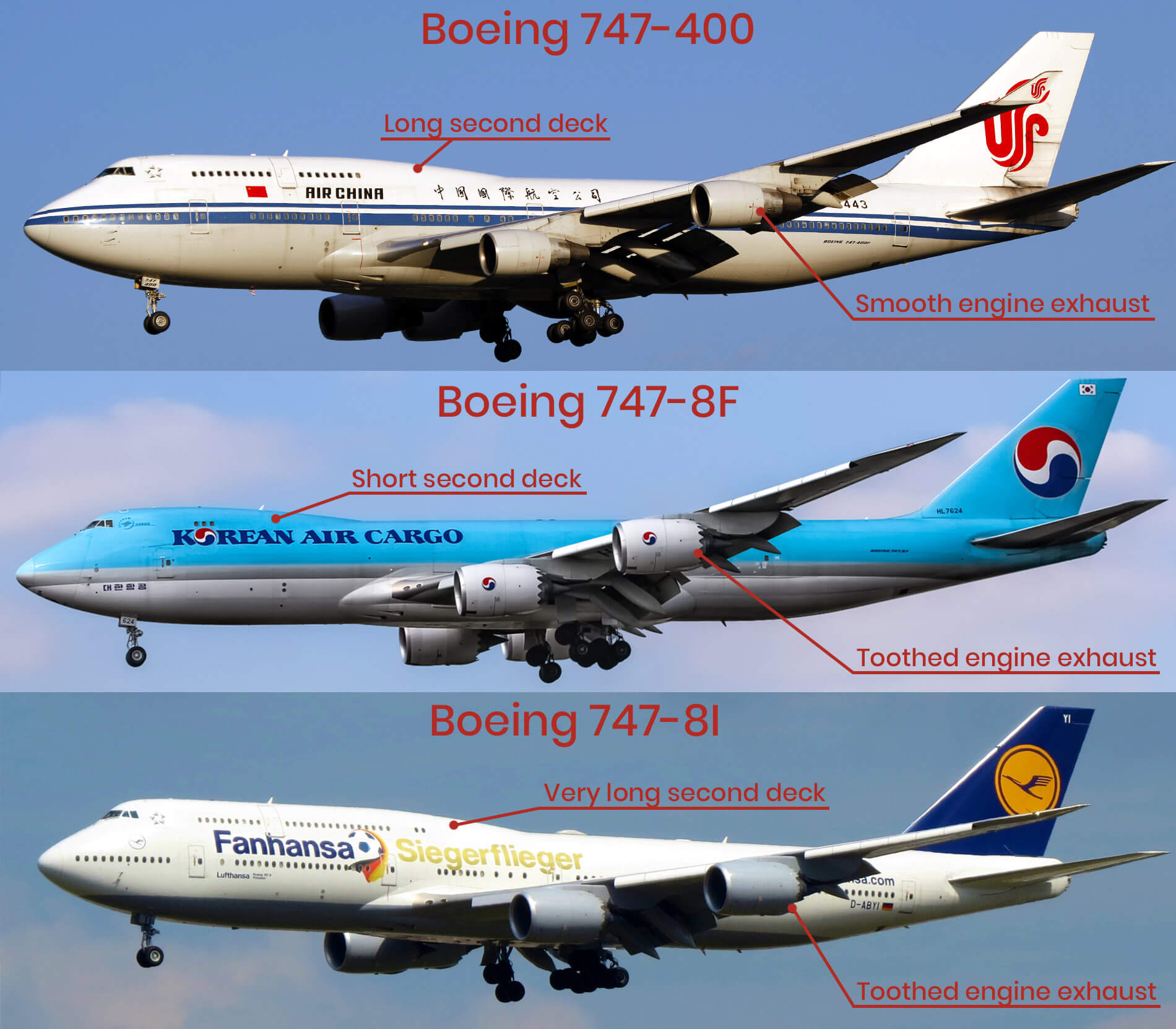Thousands of types of aircraft have been manufactured during the last century. Even the most seasoned plane spotter would not be able to recognize them all. After all, there are just too many models and variations.
But being able to identify them all is not necessary. Most aircraft belong to several broad categories and, within those categories, there are a handful of dominant manufacturers and models. Of course, we all love the exotic and the unusual, but we are more likely to encounter the popular and more commonplace types sought-after by major airlines.
Now, there are many reasons to want to identify aircraft. You could simply wish to satisfy your curiosity or want to impress your friends with your aviation knowledge. Or you might be thinking of dabbling in the art of plane spotting. Whether you plan to do that seriously and post photographs online for all to see, or just fancy hanging out near airports and enjoying the sight of graceful flying machines, being able to tell aircraft apart is important.
To ease the task, the team at AeroTime has compiled a list of the most common causes for confusion for novice plane spotters and veterans alike. This list can be used as a beginner’s guide to plane spotting, or even as reference material during your plane spotting adventures. It could even be used as a list of interesting tidbits to be remembered.
The points are not listed in order of importance. We have also decided to limit this list io commercial aircraft only. Military airplanes warrant a list of their own, as do business jets.
So, without further delay, here are AeroTime’s Top 10 challenges when identifying aircraft.
10. The jumbos: Boeing 747 and Airbus A380
The double-deckers, the jumbo jets, the heavyweights. There biggest passenger aircraft have been given numerous nicknames.
While there are only two of them, both are a source of endless fascination and excitement for hardcore aviation enthusiasts. Despite the fact that the airplanes are actually quite different in appearance, laymen have a tendency to confuse the two. The Boeing 747 was the world’s first wide-body, twin-aisle aircraft when it was introduced back in 1970. Over the years, larger and improved versions have been created, and its production continues to this day. Nicknamed the ‘jumbo jet’, it was world’s largest airliner up until its competitor, the Airbus A380, took off in 2005.
In many respects, the aircraft are very different. The 747 is American, the A380 is European. The 747 is pointy, the A380 is slick. The 747 often tops the lists of the most beautiful aircraft of all time, while the A380 is… controversial.
But the easiest way to distinguish between them is via a unique feature - the second deck. On the Boeing 747, the second deck is small, extending no farther than half the aircraft’s length. In comparison, the second floor of the Airbus A380 spans the length of the entire airframe. When you notice that, it becomes incredibly easy to tell these two airplanes apart at the first glance.
And even if that is not enough, just check out their noses. The 747’s pointy beak, with cockpit windows at the top, is very easy to distinguish from the stubby, rounded snout of the A380.
Image: Mark Harkin / Anthony92931
9. The workhorses: Airbus A320 and Boeing 737
Simply put, if you boarded a flight on an aircraft in recent years, it is most likely that you flew on either a Boeing 737 or an Airbus A320.
These two types are the world’s most produced jet airliners. There are literally thousands of them in the sky at any point of the day, and they fly people on the most popular routes, often within the same country or the same continent. And they are extremely similar to one another in appearance.
They are of similar size, seating roughly between 100 and 200 people, and between 30-40 meters (100-130 feet) in length. Both have an engine under each wing, and three sets of landing gear assemblies (one in front, two in the middle). The fact that both have many modifications with different details also doesn’t help when trying to tell them apart.
But there are a couple of prominent features that can help you distinguish them from one another.
First, we can take a look at the nose. Coming back to our Airbus A380 and Boeing 747 comparison, these smaller airliners really look like miniaturized versions of their gargantuan cousins. The A320 has a stubby, rounded nose, and the 737 has that recognizable Boeing beak. It could even be argued that the 737 looks almost angrier, with the corners of its cockpit windows slanted upwards. In comparison, the A320s look is a bit plain.
If the nose is not visible, these aircraft also have distinguishing features on their tales. All modern modifications of the Boeing 737 have a dorsal fin, a small extension that runs through the back of the fuselage and merges into the tailfin. The A320’s tailfin sticks out without any gradual transition.
Image: Laurent ERRERA / Arpingstone
8. Going smaller: Airbus A220 and Embraer E-jets
While Airbus and Boeing duopoly dominates the large jet market, smaller aircraft, designed for regional routes, are mostly manufactured by other companies, most notably Brazilian Embraer and Canadian Bombardier.
Both companies boast competing models, the Embraer E-Jet family and the Bombardier CSeries family, that bridge the gap between small and large airliners. They are roughly comparable to the Boeing 737 / Airbus A220 duo in size, albeit just a bit smaller.
Bombardier CSeries was sold to Airbus and became the A220 (the full story if far too long to include in this list), the newest addition to the European manufacturer’s lineup. So, the biggest players at the top of the regional market are the Embraer E-Jet and the Airbus A220. And, yes, you’ve guessed it, they are very similar in appearance.
While by size alone they are close to the 737/A320, distinguishing the regionals from the mainliners is rather easy. The noses of both smaller jets are like pointy beaks and are slanted downwards, as if the planes are shy and staring at their feet. If you see a small twinjet with such a downward-pointed nose, it’s either the A220 or one of the E-Jets.
But how do we distinguish between them? There are several small but useful features that can help us to do so.
Firstly, E-Jets, which include the E170, E175, E190, E195, as well as the E175-E2, E190-E2 and E195-E2 (yes, there are a lot of Es) have square cockpit window corners. In comparison, the cockpit windows of the Airbus A220 are a more complex shape, which tapers towards the bottom. This is a feature on all variants of both models, and can be easily spotted, even if the noses of the aircraft appear to be similar.
Secondly, Embraer tends to also utilize squares in its passenger cabins. E-jets have squarish passenger windows that are of equal height and width. Meanwhile, the A220 has elongated windows that are higher than they are wide.
Lastly, Embraer likes to expose its Auxiliary power unit (APU), an additional third engine that sits in the back of the plane. In all E-jets, its metallic cladding is prominently visible, sticking out just below the vertical fin. In the A220, the APU is deeply embedded in the fuselage, and only a small exhaust port is visible.
Image: Mark Harkin / Fæ
7: Engines in the back: Bombardier CRJ vs the world
If you go even smaller than the A220 and the E-Jet, but not small enough to find yourself among business jets and turboprops, you’ll be in the world of regional jets. These are quite different from the aircraft we have previously discussed.
These aircraft are small-ish with engines mounded near their tails. In the past, many large airliners had this engine placement. But now they are extremally rare, and an engine in the back became a thing of the regionals.
The most popular is Bombardier’s CRJ family, a collection of aircraft that Bombardier claims to be the world’s most-produced regional jet. They are beak-nosed aircraft with two engines near the tail. There are at least a dozen variants and modifications from the very small CRJ100 to the much larger CRJ1000, all of which have two very distinct features. The downwards-slanted beak (similar to the E-Jet and the A220) and a T-tail, a tail that has horizontal stabilizers mounted at the top of a tail fin, a somewhat unusual sight in modern aviation.
These features are important because there are a host of older regional jets similar to the ERJ. None of them are as numerous, but if taken together, they almost outweigh Bombardier’s most popular model.
The first is the Embraer ERJ family – CRJ’s main competitor, and an aircraft which mimics it in almost every way. ERJ is somewhat less popular though, and has been discontinued in 2020. While ERJ’s beak is very similar to CRJ’s, it is decidedly pointier and longer, a feature which is very prominent when looking from the side, but not as visible from other directions. That is when the windows come in: just as our E-Jet comparison revealed, Embraer likes their square windows, and this is where that feature comes out again.
The second is the Boeing 717, and its older siblings – the MD-80 and MD-90. All three are essentially the same aircraft, designed by McDonnel Douglas and rebranded by Boeing in the 1990s. While all are discontinued, hundreds of them remain operational, mostly in the United States, and fill roughly the same role as larger models of the CRJ. The 717, the MD-80 and the MD-90 do not have the Boeing beak – their noses are a quite stubby, which distinguishes them from the CRJ.
And lastly, there is the COMAC ARJ21. While it is unlikely to appear in the West, in Asia it poses a serious threat to Embraer and Bombardier – and is China’s first attempt at mass-producing a modern airliner. Sometimes accused of being a copy of the MD-90, it has the stubby nose and oval windows.
Image: Mark Harkin / AEMoreira042281/ redlegsfan21
6. Going bigger: Airbus A300, A310 and 330
Airbus is a conglomerate of European aircraft manufacturers that banded together in the 1960s in an attempt to withstand the competition of American companies.
Its first creation, the Airbus A300, was nothing short of revolutionary. The jet bridged the gap between intercontinental wide-body airliners and smaller intracontinental aircraft.
Through the years, the A300 mutated into the A310 and A330, three models that are very much interrelated and remain popular to this day. While the A300 and the A310 were discontinued in favor of the A330, the older models can still be found across the globe.
So, how do we tell them apart? Now, this is a difficult task, especially if we consider that all three aircraft are derivatives of each other, and have fuselages of roughly the same shape.
But there are a couple of notable differences. The Airbus A330, which is the newest and the most-produced of the three aircraft, has a large bulge on the bottom, right between the wings. This unique feature is extremely noticeable at first glance.
While the A300 and the A310 are more difficult to tell apart, there are a couple of differing features.
Firstly, the A310 is generally shorter. But considering that they are rarely found besides each other, this is not particularly useful information. Next, the A300 does not have an emergency exit above the wing. The A310 is slightly newer, and had to comply with different regulations, which required the additional door. However, the door is not present on cargo versions of the aircraft.
But if you manage to notice the first two points, and then recognize the bulge of the A330, you can count yourself as a true aficionado of European aircraft. Congratulations.
Image: Eduard Onyshchenko / Fæ / Ken Fielding
5. Even bigger: Boeing 777 and 767
The 767 was Boeing’s response to the Airbus A300, a smaller wide-body jet for those occasions when the 737 is just not enough. Then, in the late 1980s, Boeing designed the first truly intercontinental twin-engine jet, the 777, bridging the gap between the 747 and the 767.
First, both the 767 and the 777 must be distinguished from the Airbus 300 and its derivatives. This is an easy task.
While all three wide-bodies have somewhat similar noses (the Boeing beak disappears here), Boeings have the A330-like bulge on their bellies, which is quite pronounced, but still visibly smaller than that of Airbus. The A330 also has a subtle feature, inherited from its older cousins, the ‘notched’ cockpit window. This looks like it has one of its corners missing. Boeings don’t have this.
Now, back to the 777 and 767. The former is obviously larger, but that is somewhat difficult to see without looking at them side by side. The 767 is also much older, and, while not many remain flying today, there are still enough to cause some confusion.
So, where to look?
There are two main features. First of all, as it is much bigger, the 777 is heavier and requires far beefier landing gear, with six wheels on each assembly compared to the 767’s four. Secondly, from certain angles it may look like the 777 has attempted to grow the 747’s hunch, as the twinjet’s fuselage has a distinct bump just behind the cockpit. And lastly, the APU exhaust of the 777 is flat, while the same feature on the 767 is rounded – making them quite recognizable from the back.
Image: BriYYZ / Julian Herzog
4. The newbies: Airbus A350XWB and Boeing 787 Dreamliner
The two aircraft are quite new, and their most notable feature is the heavy use of the latest composite materials. But all modern aircraft are painted, so, unfortunately, it is not possible to see if the plane is made of metal or carbon fiber.
However, the aircraft are somewhat similar. Both are intercontinental wide-bodies. The 787 is Boeing’s alternative to the Airbus A330, and the A350 is Airbus’ take on the 777. While slightly different in size, they are considered fierce competitors, mostly because they were conceived and designed in the beginning of the 21st century.
They also look quite similar. Both have downwards-slanted noses, a feature that distinguishes them from older wide-bodies such as the 777 and the A330. But they are also a lot larger than the A220 and the E-Jets. Both the length and wingspan are roughly twice as big, a feature that is especially noticeable if you take a look at the windows.
So, how to we tell them apart? Well, that is actually quite easy.
Much like all of Boeing’s latest generation aircraft, the 787 boasts a toothed exhaust on its engines (which is a feature you will be unable to miss once you have noticed it for the first time). The A350’s engines are smooth, but the aircraft has a distinguishing detail of its own - the ‘sunglasses’.
All aircraft of this model have a black outline painted around the windows of its cockpit, a feature Airbus has included on all new aircraft, including the A320 and A330 families. So, once you notice the outline, you now only have to choose between a handful of Airbus model. And, due to the size and the shape of the nose, those are easy to tell apart
Oh, and the wingtips of the 787 and the A350 are also quite different. Airbus has included pronounced winglets on all its planes of this model and the tips slant upwards gracefully. In comparison, Boeing went with horizontal wing extensions, which bend slightly backwards and make the wing of the 787 look like that of a swallow.
Image: Valentin Hintikka / N509FZ
3. The classics: recognizing different generations of Boeing 737
So, now you can spot the difference between models of aircraft. What now?
The next step is recognizing the different generations and variants of the same model. Let’s start from the most popular airliner of them all.
The 737 has been manufactured by Boeing for more than half a century. The aircraft has over a dozen variants, and there are even variants of those variants, meaning that the 737 family is really quite extended. But they can roughly be grouped into four generations, each corresponding to significant advancements Boeing made while updating the aircraft.
The first generation, the Boeing 737-100 and 737-200, is not particularly relevant as, nowadays, it is almost exclusively relegated to museums. However, if you are lucky enough to find one flying, distinguishing it from later 737s is fairly easy. You just need to look at the engines. Being quite old, the vintage Boeing is likely to have narrow, elongated engines. In addition, they do not have the familiar dorsal fin. But don’t worry, you won’t confuse it with the Airbus A320.
The second generation, which is called the ‘Classic’, includes three variants: 737-300, 737-400 and 737-500. They only differ in length and so, they can only be told apart with experience from judging at a distance.
Much like the third generation, which is rather aptly named the ‘Next Generation’ (NG), they have modern, large engines that were given the nickname ‘Hamster Pouch’ due to having distinctly squashed appearance.
The NGs (737-600, 737-700, 737-800 and 737-900) replaced the Classics in the 1990s. They have similar engines, but sport a distinct innovation: winglets. While the wings of the Classics end in an abrupt cutoff, NGs are gracefully bent. Some NG winglets are slanted upwards, while others have an additional downwards-facing branch.
And what about the MAX? The most distinguishing feature of the fourth generation of the 737 is, of course, the controversy that surrounds it. But that one is hard to spot. The second difference, which is shared by all MAX aircraft, is the engines. Boeing placed these further forwards, a decision that sparked the aforementioned controversy. The engines also sport the same toothed exhaust as the 787.
But the biggest difference, once again, lies in the winglets: the MAXes do away with graceful bends and have two small triangles at their wingtips, one of them facing downwards, and another one – upwards.
Image: Felipealvarez / Makaristos / Arpingstone / Jakub Hałun
2. The competitors: recognizing different variants of Airbus A320
The Airbus A320, the biggest competitor of the Boeing 737, does not boast as many generations. But that does not mean that the aircraft lacks variation.
The A320 is a base variant launched by Airbus in the 1980s. The whole family is named after it, as it was initially developed into three additional variants: the A318, A319 and A321.
The four aircraft differ visually, but only by length. The A318 is the shortest, and the A321 is the longest. Apart from the number of windows and doors on the side, the aircraft lack any other distinguishing features. You’ll need to really study those photographs to train your eye.
In the 2010s, Airbus updated the model, referring to the new generation as the A320neo (the ‘neo’ stands for ‘new engine option’), and retroactively renamed the original generation ‘CEO’ (Current Engine Option).
On their own, the new engines are not that easy to spot, especially because both generations can have several different engines of contrasting shape. However, this is also their only distinguishing feature as other improvements, such as advanced avionics, are not easy to spot from the outside.
Another thing you could look at are winglets. In the mid-2000s, Airbus introduced Sharklets, winglets that gracefully bend outwards and upwards. All ‘neo’ aircraft are fitted with these by default, while CEOs can sport a wide variety or even none at all. Unfortunately, Airbus also offers to install Sharklets on its older models, so you can’t trust this feature alone.
Once again, distinguishing between different Airbus aircraft is difficult. Honing your eye to recognize them at a glance requires even more skill than telling the A300 and the A310 apart. So, anyone who can do that has the mark of a truly skilled spotter.
Image: Fæ / Peter Bakema / Riik@mctr / Björn Strey
1. The Queens: recognizing different generations of Boeing 747
We began with the jumbos, and with the jumbos we shall end.
Being a fan of the 747 is a tell-tale sign of aviation geekery. While differentiating between the ‘Queen of the skies’ and its competitor, the Airbus A380, is not too difficult, spotting varying types of the Queen is a decidedly more difficult task.
Unlike the 737, some of the variants of the Queen do not fall into neat generations, and their most distinguishing feature is the length of the fuselage.
The most recognizable variant is the 747SP. It is short, stubby and almost extinct. The 747SP was made by shortening the base of the 747-100, just as the 747-200 was made by lengthening it. All three variants are no longer in commercial use, but can be found in some governmental fleets.
The 747-300 and 747-400 can roughly be described as second generation, and they have a distinctive, stretched second deck. The -300 has also been retired by all commercial operators. So, if you see a 747 and it is not a 747-8, then it is most likely the 747-400.
The last ‘generation’ of 747s was developed in the 2000s, somewhat as a response to the Airbus A380. Their most distinctive feature is the recognizable toothed engine exhausts, like those found on the 787 and the 737 MAX.
Only two variants were made, the passenger 747-8I and the cargo 747-8F. So, if the aircraft has windows, it is the I, and if it does not, then it’s the F.
byeangel / Oliver Holzbauer / Kiefer.
And that is our list. Of course, when you begin to introduce more obscure aircraft, then things really start to get complicated. But that is a story for another day.
So, are there any aircraft that you enjoy differentiating from each other? Do you have any tips for telling aircraft apart? Then let us know in the comments below.

